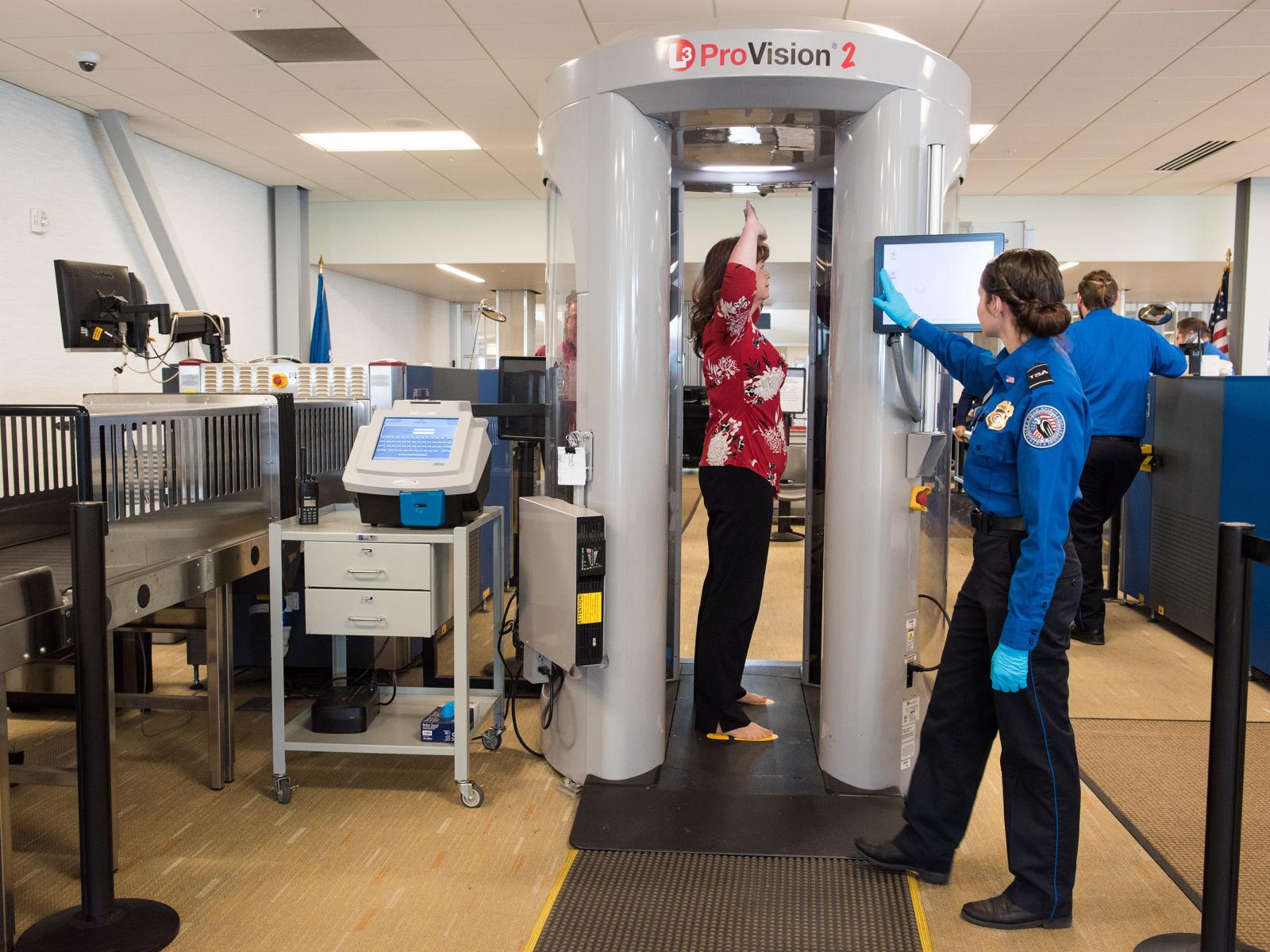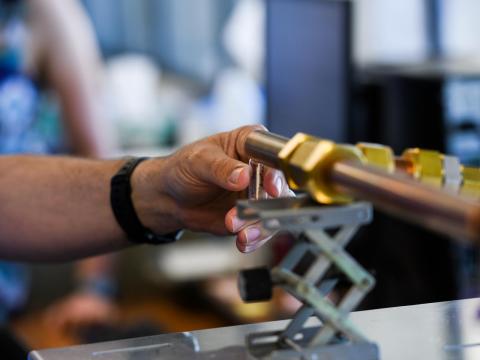Dreaded airport security checkpoints are getting faster, more efficient with PNNL technology

PNNL engineers developed the millimeter wave technology for screening passengers who might try to conceal metallic or non-metallic weapons in layers of clothing. The Transportation Security Administration has installed the body scanners, also referred to as Advanced Imaging Technology, at airports the world over, including this one at the Pasco Airport.
Andrea Starr | PNNL
Published: September 22, 2019
